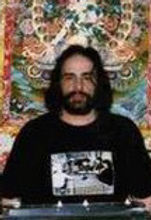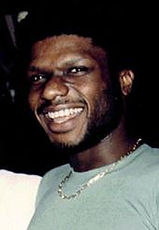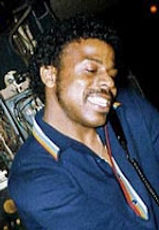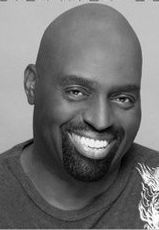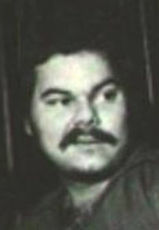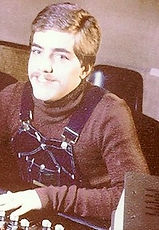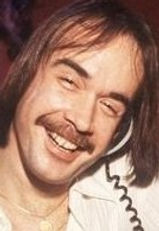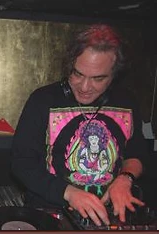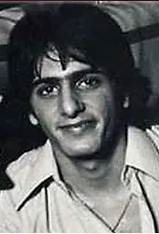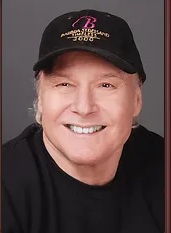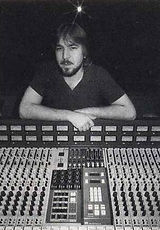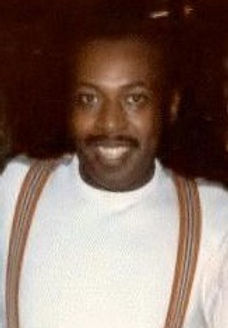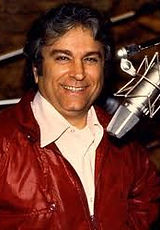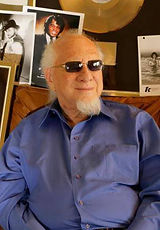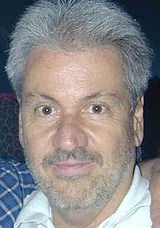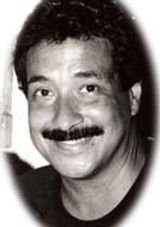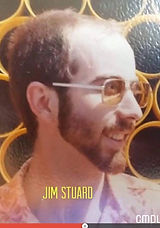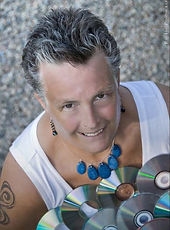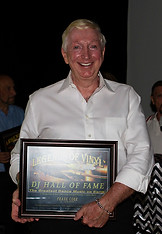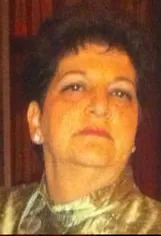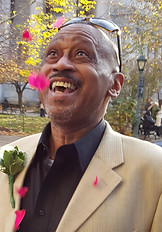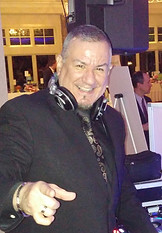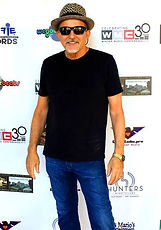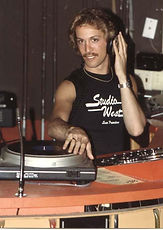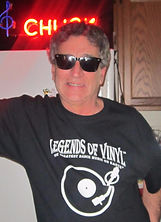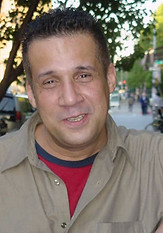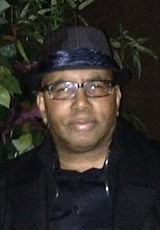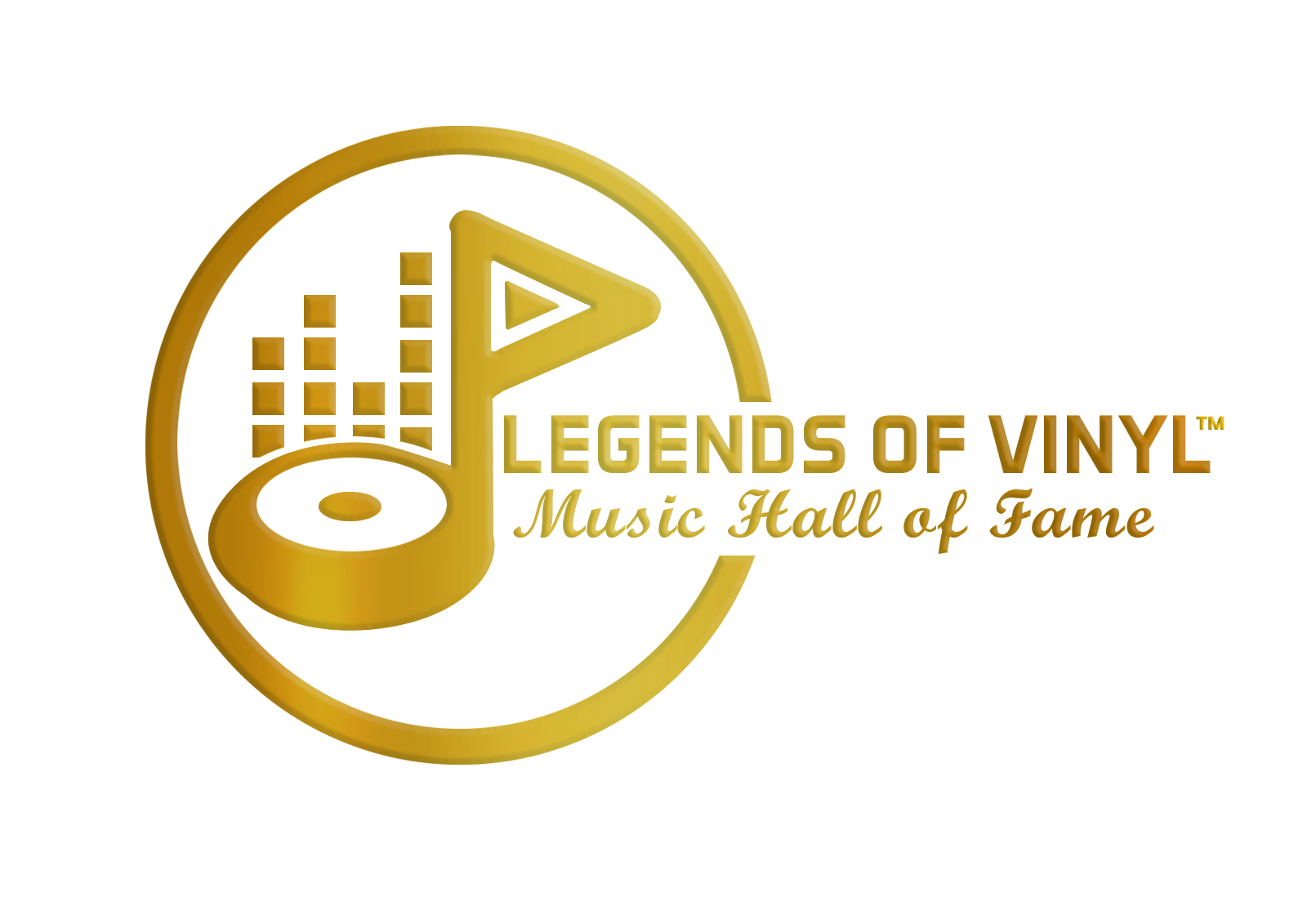Steve D’Acquisto, Disco Pioneer From the DJ History archives: a contemporary of David Mancuso and Arthur Russell collaborator takes us on a journey through the peak of ’70s clubbing in New York City.
Steve D’Acquisto was there from the beginning of club culture in New York City. A Brooklyn native, he first began DJing at after-hours clubs in the late ’60s. In the early ’70s he became a regular DJ at gay discos, including the legendary Sanctuary, and eventually fell in with David Mancuso and the scene at the Loft.
According to Tim Lawrence’s book Hold On to Your Dreams: Arthur Russell and the Downtown Music Scene, D’Acquisto was quite the character: his contemporary Steven Hall describes him as a “Brooklyn mafia thug” with a penchant for “wild, queeny outbursts” and a “kind of autistic brilliance.” As a DJ, D’Acquisto cut a wide swath through the ’70s scene, burning up clubs with his fathoms-deep collection of funk, soul, and disco. Near the end of the decade, D’Acquisto met a young musician who would change his life: Arthur Russell. Sensing incredible potential in the demos Russell showed him, D’Acquisto worked with him to co-produce Russell’s single “Is It All Over My Face?” under the name Loose Joints, which would become one of the era’s defining singles.
D’Acquisto died in 2001. In 1999, he was interviewed by DJ History’s Bill Brewster, covering everything from his love for the Loft to his relationship with Russell, who he calls “the greatest thing I’ve known in my life.”
How did you start collecting records? Where are you from? I was born in Brooklyn. My dad would be 102 years old if he were alive today and he had quite a record collection. A lot of Italian music; waltzes. He was born and raised in Sicily. He was a merchant seaman. He bought gramophones. I have an older brother and sister and they also loved music. I was born in 1953. I’m 55 today, actually. My brother bought me an old Traveler Victrola which was electric as opposed to crank up. My parents told me that by the age of three they had a party trick where they would ask me to put on a record and I would. I was born before TV, so I listened to radio dramas and comedy shows. I can remember that I found out from the radio that we were not immortal. This was the biggest shock of my life. That’s how I found out about death.
So I started collecting records as a kid. Other kids would ask for toys on their birthday. I asked for records. When I was eight, nine, ten, I could name what was going to be number one. I had an ear for public taste. I have 6,000 78s. I can’t even count the 45s. Fast forward to my teens… Actually, just before you do that can you tell me about the radio DJ Symphony Sid?
The first one was Martin Block. This was before rock & roll. He was an institution here in New York. He was on WNAW-AM. He was also influential in terms of live broadcasts of swing bands and one of the first people to start playing records on radio, as opposed to live music. Because of Alan Freed I fell in love with Elvis. But I was also buying Doris Day. I heard “I Want You, I Need You, I Love You” by Elvis, which blew me away. That was the last 78 I bought. And the first 45 I bought was “Let The Good Times Roll” by Shirley and Lee, which was also an Alan Freed record. Ultimately it got banned because of the lyrics. It’s a great party tune. It’s all about sex and fucking. But those things existed on records before, like Bessie Smith. “Nobody In Town Can Bake A Sweet Jellyroll,” that’s all about getting fucked. Fats Waller’s “Hold Tight” is all about cunnilingus. “Hold tight, I want some seafood mama.” I had Little Richard records. The Platters. All the doo-wop comes from what the Ink Spots and Mills Brothers were doing. Penguins, Cleftones, Orioles. Alan Freed took us into a whole new world. Subsequently, there was Peter Tripp. When Alan Freed left, or got fired, which we thought was bizarre, Murray the K came in and took over from Freed.
In the ’60s I took LSD and that completely changed my life. Do you think Freed was persecuted because he championed black music? Yes. Absolutely. No question about it. They went after him because he was ruining the youth of America. He was taking their children and turning them on to this bizarre music, because at that point in time it was considered the devil’s music. And when you listen to “Let The Good Times Roll”… I saw an Alan Freed show at the Brooklyn Fox on Fulton Street with Fats Domino, Everly Brothers, Joanne Campbell, Platters, Little Richard. The crowd was mostly black. That is etched in my memory. They were trying to kill it, but it just wouldn’t go away.
Where did you hear Symphony Sid? He was on the fifteens on the AM dial. At that point I was into Billie Holiday. We would listen to it at a friend’s house. I’d already started to collect Billie Holiday and Bessie Smith records. The first album I bought of Billie Holiday was The Golden Years, a two-record set on Decca. She said on the liner notes her influence was Bessie Smith, so I went and sought out those records, too. Here I was going between jazz, rock & roll and pop. Then came the ’60s and the Beatles, who took over the States.
What were you doing for living after you left high school? I’m a licensed funeral director. At 17, a friend from childhood had a father who was opening up a funeral parlor a couple of blocks from my house. His father took a liking to me, and I was there for seven years. Then in the ’60s I took LSD and that completely changed my life. Rare Earth – Get Ready
When did you first take that? In 1966 or ’67. At that point we were listening to Rosko on WNAW and Scott Muni early on. Roskoe was the most influential of the ’60s DJs. He played R&B, long tracks. Really, WNAW was the first station to start playing album tracks rather than just the singles. You started hearing five, six and even ten-minute tracks. “In A Gadda Da Vida” by Iron Butterfly was probably the longest record to be on the radio; “MacArthur Park” was another one, by Richard Harris; “Get Ready” by Rare Earth. Ultimately, we would end up playing these records in clubs. Early on we played “In A Gadda Da Vida”; we played “Get Ready.”
So here I was, infatuated with LSD and marijuana. Smoking and dropping acid all the time. Started to go out to clubs, gay bars like Stonewall. I finished embalming school; after I finished my apprenticeship, I moved to Los Angeles in the mid-’60s. In ‘64, I came back. I was around when the Stonewall riot happened. I was there a few nights before, but not on the night. I was on Blue Cheer – LSD – that night; beautiful colors as well. While I was waiting for my license I went out and drove a cab. I didn’t want to do embalming, but my parents had spent all this money; I’d already done LSD and it had changed my life. But it gave me a basic education. I was driving my cab, taking amphetamines so that I could drive 12 hours straight. I was the highest cab driver at the company. People had to get in the car while it was still moving; that’s how fast I was moving! I dropped somebody off at the Haven, in 1 Sheridan Square, which I later found out was where Cafe Society was, where Billie Holiday had her biggest successes. So what did this guy say when you were dropping him off?
I asked him, “Where you going?” He said “Oh, it’s an after-hours.” It was an illegal after-hours, because they used to sell alcohol. Didn’t have a license. Mmm, wonder what this is all about? So I went down there…
We were such radicals! We thought we were Thomas Jefferson, George Washington, Benjamin Franklin. Was this after Stonewall? I believe it was; or around the time of Stonewall. It was late ’68, early’‘69. Summertime. I went into this place and they let me in. And I had long hair right down my back at this point. So they let me in, figuring I was some kind of freak. And I met Francis, who was the disc jockey there; it was a whole new world to me. Here was this guy, playing records, mixing records, doing all these great things that had never happened before. On radio, basically the fade would come and the new one would come in. Francis [Grasso]had a lot of records, but I had more. And we used to chat, and we got friendly.
By that point I’d be going every night. I’d book the cab until 3 AM, didn’t have to bring the cab back till 5:30 or 6, so for two hours I’d go hang out with Francis. And we’d do speed together. I always had good drugs, he always had good drugs and we became very friendly to the point where I was doing lights. They had this piano-board thing with keys that you’d control lights with. For six months that went on. One night I was at Francis’s house and he’d been playing for two weeks straight and his alternate hadn’t showed. They called Francis and told him he had to come in; it was a Monday night, and Monday and Tuesday were the off nights. So Francis says, “I can’t do this.”
You have to remember these weren’t six-hour nights, they were 12, 14-hour nights. It would depend on how high people were as to how late the club stayed open. He looked at me and said, “Do you wanna go play some records? Just make believe you’re me.” So I did and I liked it.
What equipment did they have there? They had two Rek-O-Kut turntables, two piggy-back Dynaco amps, very rare and valuable amps; and they also had these giant speakers that belonged to Felix Pappalardi, who was one of the producers of the band Mountain. Somehow or other, Nicky DiMartino, who was the owner of the club, ended up with these giant speakers. Great sounding things. So we were actually using high-end, hi-fi amps.
Did you have a mixer? No, it was two integrated amps, literally on top of each other: piggy-back. They had bass and treble controls and volume controls. Both connected to that same set of speakers. No cueing system. You had no clue about the record coming in. You had to listen over the record that was playing, so you could hear. You really had to know your records. Because a lot of these things had long intros, which you didn’t want to have, like some of these Gladys Knight records. If you listen to “You Need Love Like I Do,” there’s a long intro before it comes in. We used to use the downbeats where the record came in to actually introduce it.
Gladys Knight & The Pips – You Need Love Like I Do (Don’t You) I guessed we worked for about a year-and-a-half without headphones. We were always trying emulate radio DJs, listening to the radio; Francis and I. And then Michael Cappello started a few weeks after I did. Michael was a patron at the Haven. Michael was a fabulous person, extraordinarily handsome and just a good buddy. Michael and I were brothers for years and years. I met Michael sitting on a stoop over on Jones Street, he was completely whacked out of his mind on speed and LSD, and I was stoned. I’d seen him at the club and we started to chat, and I found out that he had a lot of records as well. And Francis was moving, and I was taking over the Haven, so I said to Michael, “Come and play records.” That was when Francis moved to the Sanctuary.
Michael ultimately went to the Sanctuary. I ultimately went to the Sanctuary. We were all moving back and forth. The three of us running clubs in the city. Michael was just a kid. He was like 16 years old when he was playing records; as far as I’m concerned Michael Cappello was the best DJ who ever did his thing. I could listen to Michael hour after hour, night after night, and he never bored me. Always inventive, always genius, extremely clever. Although he was very worldly, he’d been hanging out in the city a long time and because he was so beautiful and handsome, girls would take advantage of him when he was 12 or 13 years old. By the time he was 16, he’d seen a lot. Women, staying out all night, moving in with women at 14 or 15. Francis was also his senior but not as old as me. But Michael was just phenomenal. He was a great DJ and a spectacular entertainer and a terrific head for music. He discovered some things: “Give It Up Or Turn It Loose” was one of Michael’s. We would all go out looking for records together.
Where were you getting your records from? Well, Francis used to have this place on Church Avenue and Flatbush avenue in Brooklyn, where he used to buy a lot of his records, and at that point this was a transitional period where it was becoming a more black neighbourhood. This guy had a lot of good stuff: Dyke & The Blazers, original Kool & The Gang stuff on De-Lite, “Funky Man,” Lou Courtney “Hot Butter And All,” “The Chicken” by Jackie Lee. All these funk obscurities. And all these album cuts too. We would all go there. Then we started going to Downstairs Records on 42nd Street, where Nicky worked. Nicky was just a great guy, and he turned us on to a lot of good music. We’d go to Dayton which was on Broadway and 12th, and find albums there. At the Loft, we were having a bit of trouble with the cops, it had become quite famous and the cops were coming to break balls. Were you still playing some of the psychedelic rock stuff, too?
We sure were. We were playing The Rolling Stones, “Sympathy For the Devil” from Let It Bleed, we’d play “Live With Me” and “Gimme Shelter,” we’d play Led Zeppelin like crazy, “Whole Lotta Love.” The Doors “Peace Frog” and “The End” was the closing record for years.
At the Haven? At the Haven, the Sanctuary and all kinds of places. It was a tremendous record, really long and people would just come down. At least, come down enough to go to the next place! There were other after-hours joints that started at eight in the morning. The 220 on Houston Street was one.
Were these primarily gay? All the freaks. You’d have gangsters, drag-queens, there were absolutely no barriers. I come from an era where men couldn’t dance with each other. There would be a light system, which I ultimately introduced to the Loft when we were having trouble with the police in the mid-’70s. They would flip a light into the back rooms because all these places had bars, and they had dancing jukeboxes in the back and these listening jukeboxes in the front.
So they would just turn the lights on and you knew you’d have to stop dancing with each other. And they would pipe in the music from the front jukebox and stop the music from the back jukebox. And we used to put money in the jukebox to dance. This was called the Magic Touch in Long Island in Oceanside. Gay people used to find these friends, men, women, whatever, and say, “Come with me to this bar,” and there would be 20 of us in the bar and the straight guys would accept us. It would be a cool experience. All these local places would be basically straight bars that had gay people, but you had to know someone to take you.
Skipping up a little bit, at the Loft, we were having a bit of trouble with the cops, it had become quite famous and the cops were coming to break balls. So I devised this light system for David. Flip one light if they passed by; another light if they were at the door, and another if they ultimately got through, which was a red light. And everyone knew they had to stop the music and stop dancing, because we had no cabaret license. But all the bars had ways to tell you.
Then our industry started to blow up. There was a guy named Don Findlay who was making tapes for Fire Island. Terrific head for music. Isaac Hayes – Shaft
So when did Fire Island start to happen? Fire Island happened when I was at Tamburlaine. I remember Bobby DJ turning me on to “Shaft.” He was the first person to play “Shaft” and he was playing at the Monster and other places on Fire Island, like Ice Palace. This would be ’71. Before the transition to mostly black music, when rock & roll started to peter out, was when more of the seriously gay, the more out gays [started to go]. There wasn’t really a radio station where you could listen to all of these odd records that we were finding. We would sit at Nicky’s place for hours on end and just play records. We’d be speeding. Sometime, Michael, Francis and I wouldn’t sleep for three or four days at a time. Go on and on, snorting speed and crystal meth. We were very serious about our speed! We had to be, though: we were playing 12 or 15 hours in a night, every single night. We all hung out together; Francis at Sanctuary, Michael and I at the Haven.
Did you go to the Sanctuary or were you working? If I got off early, or Michael was playing, I would go to Sanctuary. Go back, listen to Michael. Life was a club, 24 hours a day.
Describe the Sanctuary. Sanctuary was the most incredible of all the places in its appearance and the structure. The DJ booth was on the altar, so it was a real ego trip. And they had these four giant speakers hanging from the rafters. It was a peaked roof and these four big speakers facing down on to the dancefloor. Then they had, on both sides, these balconies with tables and chairs. Then the bar, you’d have to walk through these two big archways. So you’d come in, you’d go through the bar, go through the two archways and there would be the dancefloor. And at the very end, there would be the DJ booth. That was the first time we had cueing systems.
Who came up with the idea? Francis I guess, but I really don’t remember. The first time there were speakers in the booth, like they have now, was Alex Rosner, who you should speak to. Absolutely: Alex did the sound from day one. He did the sound for Tamburlaine. He’s a Schindler person, you know. You see the kid in Schindler’s List who jumps in the latrine? That’s Alex. In the movie it’s Oleg Rosner. He was the best. Any success I had in the ’70s or ’80s was due to the fact that I worked almost exclusively on Alex Rosner soundsystems. He’s the master. Way before Richard Long. Anyway, you were explaining to me about the Sanctuary.
Alex Rosner hadn’t gone there yet. He went there after I went to work at Tamburlaine. So Tamburlaine was where I met Alex. Where was that? Tamburlaine was 148 East 48th Street. Still there, looks almost exactly the same. That was 1971. I believe it burned down the Christmas Eve of 1971. Or ’72. Alex fixed the soundsystem. Le Jardin, he did the soundsystem. Everywhere. Ultimately, Richard [Long] stuck his nose in. Remember: Sanctuary was a legal bar, so you’d get out of there at 3 AM and Francis would come to the Haven and hang out there.
Did it sell liquor? Yes, but it did lose its license later on.
What was the composition of the crowd? Sanctuary was mixed again, because Francis took some of the crowd from the Haven, and Sanctuary had its own people from before – I think Don Findlay was there, maybe even while Francis was still happening. Don was an alternate. Don was a very handsome man, loved records, and I have some Don Findlay tapes that I treasure.
Do you have any tapes of your sets? Yeah, but I don’t know… We were so busy making cassettes, but the cassettes go back to Le Jardin really. Never really made tapes at Sanctuary or Haven, we didn’t have the facilities. When some of these clubs got cassette recorders in, they started making tapes. I don’t believe I have a tape of Tamburlaine. Michael has a lot of tapes. John Addison, owner of Le Jardin, used to sell our tapes. He’d tape every night and sell them. We never got a penny from it.
Was the crowd at Sanctuary quite druggy? All the crowds were druggy. Drugs and alcohol. Speed the drug of choice, LSD second, downers – Tuinal, Seconal – third. There were these Lotusites, God, they make you do things; extraordinary pills. Slim, oblong, purple pills.
Musically, what was Sanctuary about? Originally, it was like Haven, but it became more black. Incorporating some of the early funk you mentioned earlier? Yeah. We still played some rock & roll there. I can remember doing “Ain’t No Mountain High Enough” at Sanctuary. Drag shows with Princess doing Diana Ross. That was later on, when it became a juice bar, after it lost its license. When Shelley got murdered. They shot one of the quasi-owners. Mob? Yeah. He got shot, I guess, because he was holding back money or something. Then it was, “Fuck you, you’re dead.” I was at Tambourine one night when one of the bouncers got shot…They laid him across my feet with his legs dangling on the floor.
And that’s when they lost the license? They lost the license because he was murdered on the premises. Oh shit. Pretty scary.
Very scary. I was at Tambourine one night when one of the bouncers got shot and they laid him across my feet. I used to have a booth at Tambourine which was elevated slightly. They laid him across my feet with his legs dangling on the floor. I put on James Brown Live At The Apollo, collected my records, and left. Never worked there any more. We were living in a very… Cocaine had just started getting fashionable then, and cocaine is a terrible ego drug. I hate cocaine. I only did cocaine twice in my life and each time I hated what it did to me. I highly opposed it whenever I saw people doing it. I used to turn people on to LSD when I saw them doing coke. Straighten them out, you know. Have some of this! From the Haven, you went to… To the Sanctuary. Then Francis went back to the Haven. Then Francis got his own club called Club Francis, which Nicky DiMartino, who used to run the Haven, which finally ended up getting shut down. Nicky ran this club called Club Francis. He also ran Sherry’s; a whole bunch of little places. Francis went there, Michael and I went to Sanctuary. Then I went from Sanctuary to Tamburlaine. From then on you’d have to ask Michael. We messed around a lot. It’s hard to remember. I got Tamburlaine; and was the disc jockey for the whole run of the Tamburlaine, in fact. Michael, at that point, I think was playing at Townhouse on 38th Street, then the Round Table. He used to come and hear me when he’d finished spinning. Tamburlaine was where it all started to come to the forefront. At Tamburlaine it became popular for the intelligentsia to go to clubs. They weren’t going to Sanctuary or Haven, these were still very underground things. Tamburlaine, because it was an East side location, it wasn’t a very big place. You had people like Peter Max, Truman Capote, Jackie Kennedy, Andy Warhol, Keith Moon. Rock & rollers started to come. It was the precursor to what Studio 54became, but on a smaller scale. People still talk about Tamburlaine. I think it was the high point of my career as a disc jockey.
What kind of stuff were you playing? Anything that people could dance to. Hues Corporation – Rock the Boat
Which was? Everything. It didn’t matter to me what my sources were. In fact, I had rock & roll records which I thought were amazing. “Rock The Boat,” that was a good record, but it was considered a bubblegum record. I also had a bit of an immature streak in me, still do. So my music was always youthful. I was also a political animal. I was a freak and a hippie, but I was also a radical. I used to try to tell stories, that was my gig. I used to try and talk with the music. It changed from one story to another: I love you; I need you; you’re hurting me; I’m going to leave; I want you back again. Then it would be: the government is going to kill us!
How do you tell a political story exactly? “Law of the Land” is extremely political, by the Temptations. “Papa Was A Rolling Stone” is actually a political record. Jesus, “Sympathy For The Devil” is a political record. But you were also trying to create an atmosphere with the music, too. “Black Skinned, Blue Eyed Boys” by the Equals. That was extremely political. You had politics, you had funk, you had love. You had all these different subject matters to go through. I’d also try to be intelligent, I’d try to be sophisticated. But it was all about the music.
When I stopped playing records in the mid-’80s, it bored me, because I found that people were paying so much attention to the mix that they weren’t paying attention to the music. Some of these guys had these books with beats-per-minute and they’d match the songs with the BPM without figuring out that these two records had nothing to say together. Not a shred of a link apart from a tempo. They’d speed up and slow down records which we never did. We always tried to play them at the speed they were recorded. If you wanted to get fast, you played an uptempo record.
How did you come across David Mancuso? David met me at Tamburlaine or Tambourine. He introduced himself to me and gave me one of his cards and said, “I have parties, I love your club, why don’t you come down one night.” I went there on my own one night and I walked into a whole other world. I walked into a world of unbelievable sound. Tremendous beauty. Just special as can be. There was nothing like the Loft. The Loft was a small little place. But it was just unbelievable. The appearance of it: it had this mirrored ball, when we didn’t have them. The whole lighting thing was much more theatre than the clubs were. The clubs were a whole lot of blinking and flashing. By the way, we ran our own light shows.
I think the Loft has been – absolutely and completely – the most influential club ever to see the light of day. That’s what Terry Noel told me. Terry was really the very first of all of them. Terry’s the guy that Francis got it from. Terry didn’t hang around too long, though. I should have mentioned Terry; Terry was really the first one. Francis took the art to a whole other level. Because of his influence on Michael, and myself, and every other DJ who comes down from there. Ultimately these other DJs came from Michael, myself and David. Anyway going back to the Loft…I went to this place and it’s only black people. It wasn’t mixed at all; maybe six or seven white people out of a total of 200. Then there was David. David invited me into his booth, and the very next week I loved the place. It used to go on to 7 AM; that’s when the party stopped. The law in New York was bars could stay open till 4 AM, every night except Saturday, when they had to close at 3 AM. So at 3 AM we’d rush down to the Loft. I’d drive, because Michael couldn’t drive. I took Nicky Siano and a bunch of other people. If the Loft became famous it’s because of the people I brought there. The way he operated the place was always the same. You had to have an invitation or be invited by a guest, so and so forth. But then people started wanting cards, so he expanded into the next loft.
What do you think separated him from the others? David took not only the music, he knew the sonics of the records. So he’d not only match music, he’d match sonics. Because of his very sophisticated soundsystem. He had a really great home hi-fi, the ultimate home hi-fi, huge. He used to be into the sonics of records. But he wasn’t mixing when I met him. He had two turntables, but when one was stopping the other was starting. He’ll tell you. He did mix eventually, for a lot of years. The most popular years of the Loft were when he mixed. I said to him, “You should never let the music stop.” Obviously, he took my advice. He had a cueing system, but he mixed like we were mixing years ago. I could always work on his hi-fi because I didn’t need to have the earphones. We got very friendly. David and I are soul brothers.
Do you think the Loft has been the most influential club, then? I think the Loft has been – absolutely and completely – the most influential club ever to see the light of day. Ever to walk this earth. Larry Levan, Nicky Siano, Richard Long, all these people wanted to duplicate what the Loft was doing. David Mancuso created an atmosphere. Larry, although he became more popular and more famous than David, he really never had what David had. Same thing with Nicky Siano at the Gallery. He just opened up right down the street from the Loft. Larry and Richard, they did King Street right up the street as well. They wanted to take the Loft’s people; the Loft’s mailing list. And David was very liberal; never got angry about it.
He said to me on Saturday that a lot of people wanted to party and there was room for other clubs to do it for them. Exactly. He was never bitter about it. The Loft was an entity that was extremely unique. It meant so much to me that I gave up working on Saturday nights as a DJ, which ultimately impacted my career, because I wanted to be at the Loft. I guess it was ’72, ’73. I wasn’t that ambitious ever. I was happy to take drugs and play records. That’s all I ever wanted to do.
What did you do after the Tamburlaine? I went to a place called Tambourine. From there, I went there to Canada for a few months in 1972, because the same person who ran Tamburlaine and Tambourine ran a place called the Ginza, but I didn’t wanna work for him any more. He slapped me around. Strong-arm tactics. So I thought, “Fuck this,” and I went away. I was never attached to money or anything but playing records. I went to Montreal and worked in a place there called the Lime Light, which became a huge club. Owned by George Cucuzzella, who now runs Unidisc. I saved his ass, because I didn’t want the job originally. I walked in there and the guys recognized me – they’d been down to Le Jardin or somewhere – and they asked me whether I wanted to work there. I can remember bringing them “The Love I Lost” which they’d never heard before. Babe Ruth – The Mexican
They gave me “The Mexican” by Babe Ruth. I brought that back here. Rob Ouimet gave it to me. I worked with him in a place called Love on Route D. I was Rob’s alternate. Then I worked at a place called Broadway in Brooklyn, David DePino got me the gig. That was the mid-’70s, then I went back to Le Jardin. The Loft. We started the record pool. David’s? David and I, you mean. Let’s the chronology straight. Judy Weinstein had nothing to do with the origination of the record pool. She didn’t come until about a year-and-a-half later. I’ve got the incorporation papers at home. I basically organized it. David put up the Loft as a space to organize it. I got the people together; Michael Cappello and I would go to the companies trying to get promotional records. Bobby DJ is the one who wised us up to that. Bobby was the first person I know to get promotional records. Bobby was very clever about the record business. So I was pretty well-known as a DJ; Michael, too. We were both at Le Jardin, because I replaced Bobby DJ at Le Jardin. David and I started the record pool. Please get that straight. Judy Weinstein actually robbed the record pool from David Mancuso.
Well, she’s a businesswoman… I was already gone by then. 20 years later it’s still running and still pretty influential. David and I had had a bit of a disagreement. Judy came about long after I’d gone. Speak to Jackie McCloy, he knows the chronology of the pools. He gave us a plaque saying we were founders of the pools. We were such radicals! We thought we were Thomas Jefferson, George Washington, Benjamin Franklin. The reason pools came about… Tony Serafino who used to work for Kudu Records, which was part of Creed Taylor’s CRT, had this record, “What A Difference A Day Makes” by Esther Phillips. He wouldn’t give me a copy of a test pressing, because he said I wasn’t big enough.
That outraged my friends. Certain companies would set up these times when you could pick up your records and these times were not conducive to the way we ran our lives. We were out till six in the morning, we didn’t wanna be going and picking records up at 11. There was this big meeting at Hollywood; Sharon Haywood ran it, which degenerated into this big screaming match. And in the middle of it, David turned round and said, “Why don’t we start a record pool.” We chatted amongst ourselves and I stood up and invited everybody down to the Loft. This was all the DJs. Who?
Everybody. Richie Kaczor, Joey Palmintieri, Nicky Siano. I said it was pointless arguing here. We needed to get our act together. Suddenly we were standing up for ourselves. And we had this DJ meeting and we wrote this declaration of intent. I still think they’re a good idea, although record companies were supposed to contribute money to keep the pool going, but then what happens is that all turned around and they start asking for dues. Why should we pay? We’re doing them a favor. I think we only charged $5 to cover phone bills. D.C. LaRue – Cathedrals
How did you get involved in production? DC LaRue. I was working at Le Jardin and DC LaRue came in. I was the hot DJ at the time. Anyway, DC invited me into the studio when he was doing “Cathedrals.” The tempo of “Cathedrals” and the conga track are my doing, with Aram Schefrin. I got a credit on the second album, but I should’ve got one on “Cathedrals.” But I loved it. Then I got a job working at Pyramid Records, which was part of Roulette, which “Cathedrals” was on.
Was Morris Levy still there? Morris Levy was still the owner. Dennis Gamman ran it. They gave me a job doing promotion. From there, Walter Gibbons had started doing these wonderful mixes. I worked for Roulette for a while. I started being DC LaRue’s buddy.
What was Morris Levy like? He was a gentleman. Because he’s had a bad rap, hasn’t he? He was a nice guy. He gave a lot of people breaks when they didn’t stand a chance. I’m sure he did some bad things as well, but I had no privy to that. So we had Whirlwind on Roulette. Roy B was the in-house guy, and I did promotions. I was approached to do a mix by H&O Records. They wanted me to do promotion for them and do a mix of a Sandy Mercer record. So I asked Walter Gibbons to go along. I played him the track. I like to collaborate. I wanted to work with someone I admire. So I asked Walter. By the way, for playing records my motto was adapted from Billie Holiday, who said “I never sing the same song, the same way, two nights in succession. If I do, it’s not music, it’s a close order drill.” I took that on board. I tried never to do the same mix two nights in a row. I always tried to be entertaining and fresh, and maybe that’s why my career lasted as long as it did. Bobby DJ: you could go in every night and he would play this record, after that record. He had these sets that he did, and he played them over and over again. At first we used to do it like that. Francis used to have sets, so I copied him. Where was I?
You have no idea of the scope and depth of [Arthur’s] work… He could write country, pop, dance. Arthur was way, way ahead of his time. In the studio. With Walter Gibbons.
We worked on this Sandy Mercer record, “You Are My Love,” a terrific record. And “Play With Me” which was an even better record, but no-one ever got on it. Then I met Cory Robbins at one of these disco conventions. He was cute. He was working at MCA Publishing. Anyway, he invited me to work with this guy, Joe, who did Gary’s Gang.
Eric Matheww? Yeah, except his name isn’t Eric Matheww, it’s Joe something. Italian guy, with a studio in his garage in Queens. So I’m driving out there one night, and in the car this “Love Dancing” thing comes into my head. You know, “Can you see the expression on my face?” So I go to everyone, I’m supposed to be working on something else and I say, “I got this great idea, let’s do this.” And he’s like, “Love Dancing,” what are you talking about, it’s bullshit. Couple of months later, there’s this record by Marlena Shaw or somebody called “Love Dancing,” produced by Eric Matheww. So I told Arthur Russell who I’d met at Gallery. And Arthur had this “Kiss Me Again” which he did with Nicky [Siano] and I thought was an amazing record. Do you know this? By Dinosaur on Sire? Yeah. The original mix before Jimmy Simpson got his hands on it. I got to play it at Studio 54 on a tape, this 13-minute mix. Dinosaur – Kiss Me Again
Does this mix still exist? I got “Love Dancing” part two, “Is It All Over My Face?” But Mel Cheren won’t give me my tape back. It’s the first sampled record that I can think of, except we sampled ourselves. There was a piece of “Is It All Over My Face?” on the second take that Arthur just fell in love with. It was a 16-bar piece. We printed 16 bar pieces, 8-bar pieces, 4-bars and so on. And we interspersed them in between parts.
How did you achieve that, by cutting the 2-inch manually? Yeah, we took the piece, printing different pieces until we had this eight minute thing. So you’d have these beats happening. Arthur did this in 1979, long before house music. “Pop Your Funk,” the other side of “Is It All Over My Face?” was done the same way. And then we did overdubs on top of that. So I told Arthur this story. A couple of nights later, Arthur comes back and says, “We’ve written a song.” So we wrote some more words to it, and there’s a whole other part, another verse, that you won’t have heard. Arthur [Russell’s] songs, oh my God, you have no idea of the scope and depth of his work. Because he could write country, pop, dance.
There’s this song called “List Of Boys” which is one of the most phenomenal things I’ve ever heard. Arthur was way, way ahead of his time. So one night at the Loft, there’s this back room we used, and Arthur brings his guitar and plays these songs. I said, “Look, I can get money for this.” He sang “Tell You Today,” which was the first 12″ on 4th & Broadway. Loose Joints. Another Larry Levan mix. So then Mel Cheren gave us money. He gave us $10,000, and then he gave us another. We spent $20,000.
We did 14 reels of two-inch tape. We made a two record set. I said to him we were working on the equivalent of the White Album. It was all with really fine musicians. David Van Tieghem was on those tapes. Peter Gordon, the sax player. The four Ingram brothers, who I found. In the studio for the Loose Joints sessions, which were in February 1979, there were 12 people in there. That’s why Loose Joints is so enduring though, because that shit’s all live. It was made like jazz.
Who sang the vocals? Three people from the Loft, I picked off the dancefloor. Robert Green, Melvina Woods, Leon McElroy, who later changed his name to Jovonn. In one night we laid down “Is It All,” “The Only Usefulness,” “Dawn Sunny” and “No Heart Free.” Then we cut “I Wanna Tell You Today,” “The Only Usefulness” and a couple of others. I was supposed to be a partner in Sleeping Bag Records. We met Will Socolov at the Loft. His dad was a lawyer. That’s later on. Arthur went along with him, I didn’t like Will’s dad. Arthur, who was constantly the starving artist, went wherever the money was. And because we had such a poor relationship with Mel Cheren…
Why? Because he never paid us! We never had a royalty statement from West End Records, and that record’s been selling all over the world. Whatever. He keeps promising that he’ll give me my tapes back. Then he was going to make us partners in the new West End, me, Kent Nix and all these guys that he fucked over all of these years. He’s got “Love Dancing Part 2” and “Pop Your Funk.” Actually, “Go Bang” and all those sessions are the Loose Joints band. That’s why Loose Joints is so enduring though, because that shit’s all live. It was made like jazz. It’s some of the greatest dance music of all time. It was cut in the studio with good musicians; it wasn’t structured, it wasn’t planned. I wanted to be John Hammond, which is another reason I sought out Arthur, because Arthur was recorded by John Hammond.
Dinosaur L – GO BANG!!! CBS’s John Hammond? Yeah. John loved him, I’ve got a couple of reel-to-reel tapes with John talking to Arthur and everything. Arthur taught Allen Ginsberg how to play guitar. And Allen was a friend of John Hammond. He was playing with Ernie Brooks of the Modern Lovers, all those guys. Arthur used to think David Byrne stole his style from him. Arthur played on Laurie Anderson records, Philip Glass. He’s been the greatest thing I’ve known in my life. Even more so than the Loft. He had this energy and the beauty of his music; the strength, the tenderness, the visuals. He was an abstract painter, really. “I’m Not Your Boy” is phenomenal record. It’s biting, tender. It should come out just the way it is. I have a DAT of it. Actually, it should come out on your thing as an example of Arthur Russell. Because you can dance to it. I’ll give you the tape. Or play it over the phone or something. What do you think the legacy is that you’ve left as a DJ?
I wrote this thing in the early ’70s for Mastermix that basically said that discotheques were going to become the temples of the ’80s. They’ll replace religion. You stay at the party all night and that’s how you get your religious training: from the spiritual aspects of music. The spiritual aspect of music was very important to us. “What’s Going On?” That was political. So much politics in music, and we were very committed to it. We knew that some people were just coming up, and they were getting their education from what we were doing. They weren’t going to church; they weren’t going to a temple. They were learning from us. All of us thought that dancing was the first form of expression.
Even before singing, there was dancing; just moving your body to rhythms. And then we found our voice. It’s one of the closest things to God. There was never a fight at the Loft, or any club I played in. The whole experience was almost religious, we used to feel that way. We were just evangelists, I guess. Club DJs now, they’re gods. Frankie Knuckles, David Morales, Junior Vasquez. All these guys. And Russell Simmons! I remember Russell Simmons when he used go from building to building trying to get records. In the ’70s. Russell used to come to the parties.
Which parties? The Loft. They’ve got TV shows named after them, flying in jets. Why do think it’s got so big?
Because of sampling. They knew when they were coming up. It’s collage, it’s not… I’m not good about sampling.
Do you not think that some sampling can be creative? No. It’s collagism from the word go. Nothing to do with being creative. You’re taking something which has already been a hit and making something that is always, always always, inferior to the original. I don’t believe that any of those records are better than the originals. Do you? Er, yeah. In some cases, not all.
The record business is about money. That’s what it all became. The records, the clubs, the DJing, became not about music, but all about money. And that’s when I walked away. Music was the thing that drove us. Then it became money. I know it sounds cynical, but it’s really not. There’s loads of bands that I like now. Wonderful. Last time I went to Body & Soul, I got turned on to a bunch of great records. Ann Nesby “Can I Get A Witness?” I also thought that the Fonda Rae record was amazing. If some of these kids would just wake up to what’s around them now… I mean, there’s a song by the Foo Fighters called “Everlong” which is an amazing dance record. Amazing fucking dance record. But they would never think to go there. There’s a wonderful guitar riff that’s so compulsive; it has this hi-NRG feel.
I would love to play records again, man. I would love to get a gig, just a Monday night, two turntables and six people. Just to give it a go. No speeding up and slowing down; just get back to the basics of why we’re doing this. We’re doing this to entertain. We used to play slow records, they don’t do that anymore. We used to break our sets up with slow records. So people could be with each other. And so the bar could make some money, which is part of why we were there. This segregation; going here for this and there for that. Fuck, man, this is not what we intended. It was supposed to bring people together. We, the founders of this whole game, we intended it to be for people of all tastes, all colors, size and shapes to get together, hang out, and dance together. Those special moments.
Do you think that’s the achievement of the Loft? Absolutely. It’s the foundation. The Loft is the mothership of everything. Of what became the Garage, the Gallery, Studio 54 all these clubs. When all these started to happen was when the Loft started to lose its power, because people weren’t able to accept these different things. The records we played at the Loft, they came from everywhere. We worked long and hard. David wasn’t one to go out and buy records much, but the records came there. Everyone would have something to contribute. Candido – Jingo So people would come and say this is good, check it out? Yes. Dancers, DJs, from all over the city. “David, you’ve got to hear this.” And he’d pick and choose what he thought was right, musically and sonically, for his club. So all that came from any number of places. We used to play “Ozone” at the end of the party. It’s this drummish kind of African record. “Jingo” by Candido, “Thousand Finger Man,” “City, Country, City,” where for the first minute it just has this swirling organ. Nothing wrong with that. The beat doesn’t have to be continuous. What you really wanted was for everyone who was there to go out and buy every record you played. You wanted them to love them. You wanted them to be able to listen to them as well as dance to them.
By Bill Brewster on January 4, 2019
Red Bull Music Academy Daily

